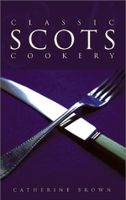Advertisement
Beremeal and Common Barley
Published 2003
Like oats, the quality of common barley and its Neolithic ancestor, bere (a four-rowed barley Hordeum Vulgare), depends on the favourable growing conditions in Scotland: long, cool, moist summers allowing the grains to ripen slowly and fill out better than they do in drier, hotter climates. Until the late seventeenth century, bere was the people’s grain. It was overtaken by oats, except in areas beyond the Central Belt that were cut off by lack of communications. In these areas, bere continued to be the favoured grain, and so it’s in the North of Scotland and on Orkney and Shetland that the old bere still survives. Ground finely into beremeal, and made into the traditional beremeal bannock, it has a greyish-brown colour and an astringent earthy tang: perfectly complemented with mellow Orkney butter and creamy farmhouse cheese – a traditional high tea when dinner was the midday meal.


